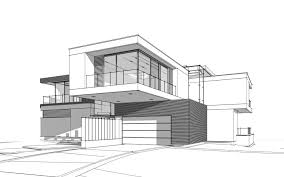Harnessing the Power of AI in Architectural Design: A Look at the Top Tools

The impact of Artificial Intelligence (AI) in architectural design is becoming increasingly significant, here are some key areas where AI is making a transformative impact:
- 1. Design Optimization and Generative Design: AI algorithms can analyze vast amounts of data and generate numerous design options based on parameters provided by architects. This approach, known as generative design, enables architects to explore a wide range of possibilities and find optimal solutions. AI considers factors like materials, structural integrity, and energy efficiency, leading to more innovative and efficient designs.
- 2. Site Analysis and Planning: AI can analyze geographic and environmental data to inform site selection and layout planning. By considering factors like sun orientation, wind patterns, and topography, architects can design buildings that are well-integrated with their surroundings and maximize energy efficiency..
- 3. Energy Efficiency and Sustainability: AI can assist in designing energy- efficient buildings by simulating energy performance and suggesting improvements. Machine learning algorithms can optimize heating, cooling, and lighting systems, reducing energy consumption and environmental impact.
- 4. Material Selection and Innovation: AI algorithms can recommend suitable materials based on their properties, costs, and sustainability credentials. This helps architects make informed decisions that align with the project's goals and budget.
- 5. Augmented Reality (AR) and Virtual Reality (VR): AI-powered AR and VR tools enable architects to create immersive experiences for clients and stakeholders. These technologies allow for real-time visualization of designs, enabling better communication and understanding of the project's concept and spatial qualities.
- 6. BIM and Project Management: Building Information Modeling (BIM) platforms enhanced by AI can facilitate collaborative design, construction, and project management. AI can predict potential clashes in the design, optimize construction schedules, and monitor project progress for timely delivery.
- 7. Historical Data Analysis: AI can analyze historical architectural data, styles, and trends to inspire contemporary designs that pay homage to the past while embracing modern innovation.
- 8. Code Compliance and Regulations: AI tools can help architects ensure their designs adhere to building codes and regulations. By analyzing the vast body of legal and regulatory information, AI can alert architects to potential compliance issues and recommend solutions.
- 9. Urban Planning and Infrastructure: AI can assist in urban planning by analyzing population growth, traffic patterns, and infrastructure needs. This information can guide architects in designing urban spaces that are functional, efficient, and responsive to the needs of residents.
- 10. Safety and Risk Assessment: AI algorithms can simulate potential hazards and risks within architectural designs, enhancing safety measures during the construction and operation phases.
- 11. Collaboration and Communication: AI-powered communication tools streamline collaboration among architects, engineers, contractors, and clients. These tools facilitate better coordination and reduce the likelihood of misunderstandings.
This article will explore some of the top AI tools for architectural design, their unique features, and how they can enhance your design process.
- Designedbyai.io: Transforming Sketches into Architectural Designs
Designedbyai.io is a game-changer in the architectural design space. This AI tool can transform sketches and photos into architectural designs, making the design process completely streamlined and effortless. With a pricing model that offers unlimited designs for $199.99 and hands-on support for $349.99, it's an investment that can significantly boost your design efficiency. - ArchitectAI: From Sketches to Designs
ArchitectAI is another tool that architects can leverage to transform sketches and photos into architectural designs. With a Pro plan available at $27 per month or a lifetime access at $397, ArchitectAI offers a cost-effective solution for architects looking to leverage AI in their design process. - Arch-E: The Future of Architectural Design
Arch-E is a tool that's making waves in the architectural design industry. Arch-E is known for its ability to transform sketches and photos into architectural designs. It's a tool that's making the design process more straightforward and efficient. - Archsynth: A New Era in Architectural Design
Archsynth is another AI tool that's making a significant impact in the architectural design industry. Archsynth is known for its ability to transform sketches and photos into architectural designs, making it a valuable tool for architects. - Visoid: Visualizing Architectural Designs
Visoid is a tool that's changing the way architects visualize their designs. By transforming programs into realistic outcomes, Visoid is making the design process more interactive and engaging. Visoid is a tool that's worth considering for its innovative approach to architectural design.
In conclusion, the integration of AI in architectural design is not just a trend; it's a significant shift that's transforming the industry. By leveraging these AI tools, architects can enhance their design process, improve efficiency, and create innovative designs that stand out.
If you're interested in implementing these AI tools in your company, Kamtech offers free Generative AI consulting sessions. They can help you navigate the world of AI and harness its power to improve your architectural design process. Contact them today to learn more.
FAQs:
Q: What is AI's role in architectural design?
A: AI assists architects by automating tasks, suggesting designs, analyzing data, and improving collaboration.
Q: How does AI help with design creativity?
A: AI generates design options based on input parameters, inspiring architects with new ideas.
Q: Can AI-generated designs replace human creativity?
A: No, AI-generated designs complement human creativity by providing innovative options and automating certain tasks. Architects still play a crucial role in making design decisions, considering aesthetics, functionality, and context.

